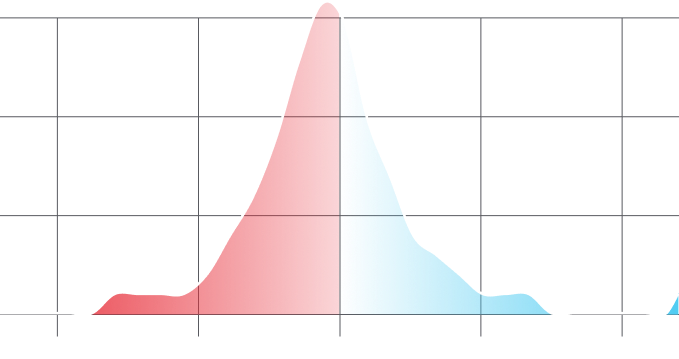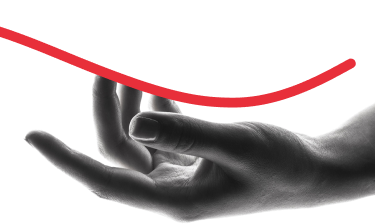The Weight of Expectations
The difference between what distinct demographic groups expect to be paid when applying for the same role
This is our 4th annual State of Wage Inequality report and, through this data, a critical trend is emerging:
There is a clear correlation between the gender wage gap and what we have identified as the "Expectation Gap."
To further explain: salary expectations any candidate has for a given job are closely tied to the salary ultimately offered to them by a prospective employer. Our data reveals male candidates expect to earn more and our report shows their offers match that expectation.
Regardless of skill level, age or years of experience, women are consistently trapped by this Expectation Gap. While experienced personally, the Expectation Gap is borne from a variety of external factors including lack of easily available compensation data and a phenomenon known as "imposter syndrome" which, combined with other influences, further cement the wage gap. This is also true of many candidates of color and those identifying as LGBTQ+.
Whether through greater pay transparency by employers, improved education around compensation in public, or simply a more open, less stigmatized dialogue about money between peers, closing the Expectation Gap is a critical component of closing the wage gap.
We hope this year's report moves that conversation in the right direction.

Takeaways
Quick, shareable insights from this year’s report
The Cloud of Discrimination
While this report will zero-in on Hired data around wage inequality, we wanted to first explore more generalized forms of discrimination in the workplace that men and women face every day.
In our research with more than 2,400 job candidates, we discovered that in the last 5 years, more than 63% of women interviewed said they felt discriminated against in the workplace due to their gender, compared to just 7% of men. Moreover, women said this discrimination manifested most clearly in the following two forms: inability to be taken seriously by company leadership (cited by more than ¾ of female survey respondents) and unfair pay (50%).
In the last 5 years, have you ever felt discriminated against in the workplace because of your gender?
-
7%
-
63%
Sexual harassment also disproportionately impacted women in our survey, with more than 26% of respondents citing this as a common form of discrimination. 41% of male respondents cited “bias during the interview process” as a form of discrimination they’ve experienced, compared to 30% of female respondents.
Discrimination, Manifested
In the last 5 years, if you have felt discriminated against in the workplace because of your gender, how was the discrimination manifested?
-
Paid unfairly50%
-
Biased during interview30%
-
Experienced sexual harassment26%
-
Was not taken seriously76%

-
Paid unfairly32%
-
Biased during interview41%
-
Experienced sexual harassment7%
-
Was not taken seriously44%

The Wage Gap
When surveyed, more than ⅓ of men either don’t believe, or are not sure whether or not there is a gender gap in wages. Women know better...


Do you believe a gender wage gap exists?
- Yes
- No
- Unsure

With data insights that support the presence of a gender pay gap in the workplace, we wanted to dig further to uncover and surface the why. Through sharing the sentiments of women working in tech, we’re aiming to add another dimension of insight to a topic that is not often discussed in the workplace.
- “Women are less likely to brag (because I think many men do) about their accomplishments.”
- “The environment doesn’t make women feel [like] they can ask for equal pay”
- “Salaries are secret so it's hard to know what's fair.”
- “Women are more likely to leave the workforce for children”
- “Self-promotion doesn't come as naturally to women and they suffer from imposter syndrome more than men”
- “There are greater repercussions for women asking for more based on social expectations of women's behavior that reinforce the gap”
- “Even if women ask, they are penalized for asking.”
- “My lived experience”
- “Historical social constructs still existing”
- “Many cultures value and invest in sons over daughters”
While disruption defines the technology industry, the wage gap among tech workers is stuck in neutral.
Looking back to our first report in 2017, and then again in 2018, men were offered higher salaries than women 63% of the time. Last year, we saw our first glimmer of hope that this gap had narrowed to 60% but this year’s data showed a disappointing return to the status quo: 63%.
This means that 6 times out of 10, women are offered less money than men to do the exact same job at the exact same company. On average, that salary figure is 3% less.
Distribution of the Gender Wage Gap
Job offers made to women that were less than job offers made to men
Job offers made to women that are more or equal than job offers to men
 Wage Gap
Wage Gap
The width of this distribution indicates that there is a high variation in the salaries offered to candidates for the same job at the same company, and that the number of times women are offered less than men is almost two times greater than the reverse.
Read 2019 insights hereWage Gap by Market
- -7% SF Bay Area
- -8% Boston
- -10% New York
- -6% Seattle
- -5% Los Angeles
The Fallout of Wage Gaps
While the wage gap is proven and pervasive, our data shows that only 60% of women have discovered they were being paid less than a male peer. For men, that number is just under 24%. In both cases, discussions with colleagues were the most common source of this revelation with 77% of women and 69% of men discovering their wage gap through a coworker.
Have you ever found out you were paid less than your peer of another gender, in the same role?
- Yes
- No
For the majority of people, the discovery of a wage gap resulted in one of three actions regardless of gender: Approaching a manager, looking for a new job, or no action at all. Men were far more likely to take no action at all, while women were most likely to start exploring new opportunities.
Wage Gaps Uncovered: Taking Action (or not)
If you found out you were being paid less than your peer of another gender, in the same role, what action did you take?
For those that did approach their manager to have a salary discussion, the outcomes for men and women were noticeably different. Men are more likely to get the pay increase (57% men get a pay increase vs 50% women), while women are more likely to receive improved job title, benefits, bonus, and/or stock options (7% men vs 10% women).
Raises For Some, Not For All
Have you ever negotiated an increase in pay from an initial offer?
The Impact of Expectations


“The usual suspects — namely experience, occupation, and location — play a minor role in explaining the pay gap. But the data points toward a bigger culprit: Expectations.”
As set out at the beginning of this year's report, the Expectation Gap is a phenomenon uncovered over a number of years analyzing Hired proprietary salary data across hundreds of thousands of job candidates. When two candidates, one male and one female, apply for the exact same job within the exact same company, men's salary expectations are consistently higher than those of women.
Many people talk about wage gaps and speculate about its causes. Hired is one of the only sources for real salary data from both men and female job seekers around the Expectation Gap. This is only possible because, when a candidate creates a Hired profile, they’re required to include an expected salary based on the skills and role they are seeking. As a career marketplace, Hired has flipped the traditional recruiting model by having employers reach out to candidates for an open position with salary details upfront. Comparing that with the salaries that both are expected by candidates and paid at the end of negotiation by employers gives Hired a clear, end-to-end window into this often murky process.
Since this data trend is fairly consistent across thousands of people and jobs, we can rule out the individual as the cause of this Expectation Gap. There is something greater at play here: an external force that, at a large scale, has influenced female candidates' expectations of their worth when applying to the same job as men.
Just as our 2019 Wage Inequality report showed the overall gender wage gap narrowing, it also showed a correlated narrowing in the Expectation Gap. This year, once again, we see those two gaps widening in tandem.
Frequency of Women Asking for Lower Salaries than Men
-
69% 2017
-
66% 2018
-
61% 2019
-
65% 2020


As the data shows, 65% of the time, when applying to the same job at the same company, women will ask for a lower salary than men. Again, this then translates to an average 3% wage gap in the salaries offered to men and women.
When looking geographically, New York has the worst Expectation Gap, with women expecting 11% lower salaries. The narrowest Expectation Gaps exist in Los Angeles and Seattle at 6%.
Expectation and Wage Gaps by Market
- 2020
- 2019
- Wage Gap
- Expectation Gap
-
SF Bay Area-7%-8%
-
Boston-8%-10%
-
New York-10%-11%
-
Seattle-6%-6%
-
Los Angeles-5%-6%
-
SF Bay Area-6%-7%
-
Boston-9%-9%
-
New York-8%-9%
-
Seattle-8%-8%
-
Los Angeles-8%-8%
The Expectation Gap for women also spreads across age groups and, consistent with previous reports, the wage gap generally widens for older women. Year over year, both the wage and Expectation Gaps widened or were flat for all age buckets, except for wages for "36-40", which in 2020 was $0.96 vs $0.94 in 2019.
Wage and Expectation Gaps by Age
- 2020
- 2019
- Wage Gap
- Expectation Gap




This Expectation Gap also has a significant impact when we look at demographic groups beyond gender, with the most dramatic being black women expecting to make $0.88 for every $1.00 a white man expects. It is notable that, in 2020, women’s expectations fell across every racial group, which was not true for men.
Expectation Gap by Race and Gender
- 2020
- 2019
Our charts also show that there is a racial Expectation Gap for many demographic groups as well, men included. In 2020, black men expect to earn $0.92 (down from $0.93 in 2019) for every $1.00 a white male applicant expects. Notably, with a rise of 2%, Asian men were one of only two groups whose wage expectations rose this year (the other being Hispanic men, whose wage expectations went up by 4%). Asian men are also now the only group whose expectations exceed those of white men, with male Asian applicants for the same job asking to earn about $0.01 more than white make applicants on every dollar.
And, of course, we see this Expectation Gap mirrored almost directly in the eventual wages paid to these groups:
Wage Gap by Race and Gender
- 2020
- 2019
Finally, our data shows that LGBTQ+ women have the highest gap in both expectations and ultimate wages, earning $.90 to every $1 non-LGBTQ+ men earn. Year over year, the wage gap was flat for all groups except LGBTQ+ women, who saw their wage gap increase from $0.92 in 2019 to $0.90 in 2020.
Wage and Expectation Gap by LGBTQ+ Status
- 2020
- 2019
The Lack of Representation
Regardless of expectations, and in spite of countless diversity programs, a simple fact remains consistent every year we look at the data: men are getting more interviews for tech roles than women.
Companies are interviewing only men for open positions 41% of the time and only women 4% of the time, a figure almost unchanged over the past 3 years.
Gender Representation in the Interview Process
- Women only
- Both
- Men only
The Stress of Negotiation
Whether it's a culprit for, or a byproduct of the Expectation Gap, women find negotiating salary significantly more stressful than men. In fact, 72% of women consider negotiating a higher salary stressful, compared to 63% of men. For women, negotiating a higher salary is more stressful than getting a root canal, planning a wedding, or public speaking.
A potentially related data point shows that, when asked how stressful it is to look for a new job, there is a massive difference between men and women, with 41% of women stating that looking for a new job is "Very Stressful", compared to just 28% of men who said the same.
The fact that men find job seeking less stressful could be impacting the Expectation Gap in that they are more comfortable walking away from an offer and have "less to lose" by asking for a higher salary. Conversely, the stress women associate with job hunting could impact their pay expectations during the job hunt and when negotiating salaries.
Stress Triggers
How stressful do you find the following?




Syndrome:
The persistent inability to believe that one's success is deserved or has been legitimately achieved as a result of one's own efforts or skills.
Hired survey data shows that 61% of women experience imposter syndrome at work frequently or all the time, compared to just 44% of men.
Have you ever experienced imposter syndrome as a professional?

- All the time
- Frequently
- Occasionally
- Rarely
- Never

- All the time
- Frequently
- Occasionally
- Rarely
- Never
The Need for Greater Transparency
While the root causes of the Expectation Gap are multifaceted and complex, there is mounting evidence that increased transparency around wages and the value of your skills as a professional may help close it. This makes sense, of course: if you have a clear understanding of what companies pay your peers, you will be more effective in assessing your own market worth and advocating for fair pay.
Our data shows that women would be more interested in working at companies where salaries are openly shared (68%), and a majority of men share that interest as well (63% said they would be more likely to work at a company that shared salary data publicly). However, nearly ¼ of men say that salary transparency would have no impact on their interest in working for a potential employer.
If a company shared their internal salary data publicly, how would it impact your interest in working for that organization?
While the desire for greater transparency in wages is shared by both men and women, there is a disparity in how much weight they assign to negative attention around wage gaps.
When asked if a company receiving negative attention for having a gender wage gap would impact their interest in working for that organization, nearly 40% of men said that it either would not or they were “not sure”. Fully 85% of women said that kind of negative attention would impact their interest in working for that organization.
If a company received negative attention for having a gender wage gap, would it impact your interest in working for that organization?




Closing Remarks
This year's findings are an important reminder that progress begins by recognizing that the Expectation Gap serves as a driving catalyst that impacts the wage gap.
As a two-sided career marketplace, we are committed to fueling awareness, transparency, and educating our community about the reality of today's pay disparity.
We recognize that while change doesn't happen overnight, holding ourselves accountable to sharing critical data trends that shed a light on the issue is a critical step in the process.
At Hired, we aim to empower innovative companies with the insights they need to create hiring standards with diversity and equity in mind, while arming job seekers with data they need to ask for their market worth.
Until we achieve pay parity, our work will continue.

Methodology
This report is based on proprietary data gathered and analyzed by Hired’s analytics and strategy team. The analysis in this study was done using a combination of voluntary, self-reported demographic data and a classifier that identified the gender of the candidate based on their first name. The results were based on a candidate’s self-identified gender, if present, before considering the predicted gender classifier.
Only data from candidates with unambiguous gender classifications were used in this report. Data related to race and LGBTQ+ status was collected through an optional, self-reported survey given to Hired candidates that is used only for aggregated research purposes and not shared with Hired clients. The salaries included reflect base pay only and are drawn from a sample set of more than 420,000 interview requests and job offers facilitated through our total marketplace of 10,000 participating companies and more than 98,000 job seekers.
Recommended Reading
About Hired
Hired (Hired.com) is a marketplace that matches tech talent with the world’s most innovative companies. Hired combines intelligent job matching with unbiased career counseling to help people find a job they love. Through Hired, job candidates and companies have transparency into salary offers, competing opportunities and job details. This level of insight is unmatched, making the recruiting process quicker and more efficient than ever before.
Hired was founded in 2012 and is headquartered in San Francisco, with offices in the United States, Canada, France, and the UK.
For more information, news, and tips for job candidates and employers, visit Hired’s blog.
